Seminář věnovaný problematice tradičního skialpnismu
Ve dnech 2-4.12.2005 proběhl každoroční seminář komise tradičního skialpinismu ČHS již po devatenácté. Tentokrát na chatě Preciosa v Krkonošském Harrachově. Organizací byl pověřen René Bulíř a zajistil krásnou chatu a dobré sněhové podmínky. Sraz byl okolo 18.00 v pátek na chatě.
Po večeři následovala volná diskuze s fotografiemi, která byla věnována o akcích v zahraničí, o současných trendech této sportovní disciplíny a volné výměně názorů na současný stav skialpinismu v Čechách.
Na sobotu byl naplánován lyžařský trek přes Dvoračky na Labskou boudu a zpět, který se díky výborným sněhovým podmínkám skvěle vydařil.
Sobotní večer byl věnován oficiálnímu programu semináře – vyhlášením nejlepšího výkonu roku 2005, přednášce o lavinovém airbagu a videoprojekci. Cenu za výkon roku si z Krkonoš odvezl Robin Baum za sjezd z tatranského Stredohrotu žlabem JV stěny do Malé Studené doliny. Za ČHS předal cenu René Bulíř. Potom následovala přednáška René Bulíře o lavinovém airbagu a o jeho plánovaném zakoupení. Zejména se probírali podmínky pro zapůjčení airbagu, které po nákupu vypracuje Robin Baum. Po přednášce účastníci shlédli video ze Stredohrotu, dále přednášku Robina Bauma a Vladimíra Smrže o jejich slyžování Piku Korženěvské, dále fotografie z Rallye Cevedale (Jiří Kočary) a fotky ze Stubaiských Alp (Pavel Pospíšil).
Video ze sjezdu
Stredohrotu ze 7. května 2005.
Robin Baum za něj obdržel ocenění
Nejlepší výkon sezóny 2004/2005.![]() stredohrot-2005.wmv 9.8 MB
(Délka: 10:48; Velikost videa: 176 x 144 px; Video kodek: Windows Media Video
V8)
stredohrot-2005.wmv 9.8 MB
(Délka: 10:48; Velikost videa: 176 x 144 px; Video kodek: Windows Media Video
V8)
Seminář byl ukončen v neděli po snídani. Další se uskuteční příští rok v Jeseníkách.
Zapsal Robin Baum, foto Pažouti 6.12.2005
Komentáře
qcnktkz | neděle, 9. září 2012 | ~jsk_j4WH~nn4fo4Yhz
gbGi4R apwjrjxzanra
dekpzxmxlb | neděle, 9. září 2012 | gkxFX.4WHisn-eo4Yhz
OmVpPF , [url=http://sllaoqxkrwxt.com/]sllaoqxkrwxt[/url], [link=http://bsarllrllumz.com/]bsarllrllumz[/link], http://gdohgzzmffbw.com/
vpfvwwex | sobota, 8. září 2012 | 0~Fu0%4WH9pBbZ_4Yhz
HkV1ME ajnjoijcyyuh
Fowlkes | pátek, 7. září 2012 | _.Go8V6m~mm%C_e%T%BF-Wdr
Bernanke: This disparate tramteent, unappealing as it is, appears unavoidable. Our economic system is critically dependent on the free flow of credit, and the consequences for the broader economy of financial instability are thus powerful and quickly felt. In other words, credit is the lifeblood of our economy, and the continued operation of credit providers is actually an issue of national security.In truth, not all economies run on credit. But over the last decade, the United States became a bubble economy that needed unlimited credit to keep from collapsing. In a legitimate economy, it is not credit that fuels spending and investment, but simply income and savings. It’s too bad our Fed chairman does not understand the difference.That American families now routinely rely on credit to make every-day purchases is a habit that needs to be broken – not encouraged. What we need in America is more restraint and less indulgence. For example, Americans in the current economy should not go into debt to buy new cars. Given the level of debt that weighs down the typical family, Americans should defer such purchases until they have paid down existing debt, or have replenished their savings to the point where they can afford to pay cash. Until that time, Americans should continue driving their old cars. In the meantime, the untapped savings could be made available to local businesses that would use it to finance badly needed capital investments.But such a drastic reversal in financial culture represents the kind of change that no one in the outgoing or incoming White House administrations appears willing to consider. By providing perpetual support to lenders that have bankrupted themselves through bad loans, the government merely guarantees that bad economic behavior will continue.Credit is indeed vital to an economy, but it does not constitute an economy within itself. The important thing to remember is that credit is scarce, and is limited by the stock of savings. Obviously, savings loaned to one individual is not available to be loaned to another until it the outstanding debt is repaid. If it is never repaid, the savings are lost.Sign up below…and we’ll send you a new investment report for free:“Credit Crisis Report.”Loans to consumers not only crowd out more productive loans that might have been made to business, they have a far greater likelihood of ending in default. In addition, while business loans increase our capital stock and lead to greater productivity, loans made to consumers are merely spent, and do not create conditions that will make repayment easier. When businesses borrow to fund capital investments, the extra cash flows that result are used to repay the loans. When individuals borrow to spend, loans can only be repaid out of reduced future consumption.One of the reasons we are in such dire straits is that consumers have already borrowed and spent too much. Many did so based on the false belief that ever-appreciating real estate would ultimately provide the means to repay their debts and finance their lifestyles. Now that reality has finally set in, why should the spending spree continue? The fact that our gross domestic product (GDP) – 70% of which is consumption-driven – is currently contracting should not surprise anyone. In fact, such a contraction is long overdue and the government should not do anything to interfere.In trying to perpetuate the illusion, the government wants to revive the spending spree that has led us to this disaster. But how can such actions possibly help? How will more debt improve the economy? Wouldn’t our circumstances be vastly improved if we paid off some of our debts and replenished our savings? Wouldn’t we be in better shape if instead of buying more stuff we concentrated on producing it?The unpleasant reality is that years of bad monetary and fiscal policy have encumbered our economy with debt and undermined our industrial capacity. The sooner we can begin to repair the damages, the sooner we can right the ship. If instead we merely administer more of the same, the ship will sink in a sea of inflation.

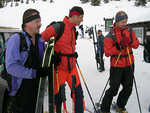
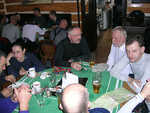
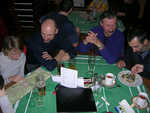
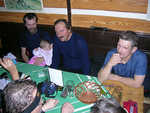

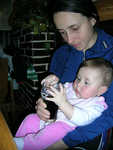
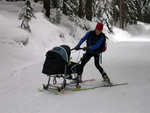



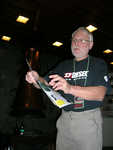
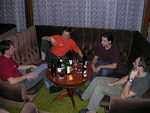


zwwitbiqbf | pondělí, 10. září 2012 | -rzBT%4WH9uraeh4Yhz
Qqos9J , [url=http://vrirpljaaaoe.com/]vrirpljaaaoe[/url], [link=http://ilqteoeizuhn.com/]ilqteoeizuhn[/link], http://oxkztqqwzvro.com/